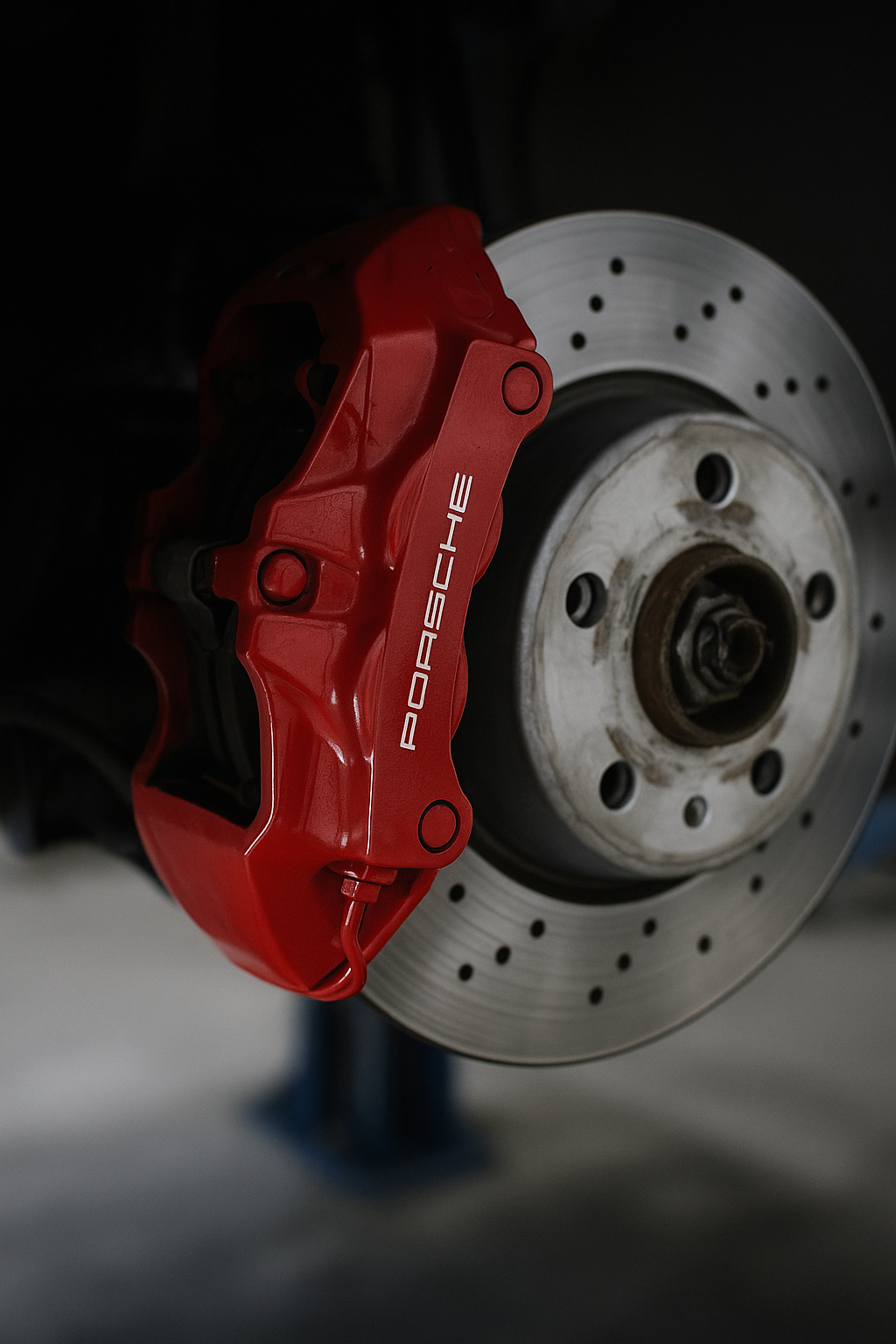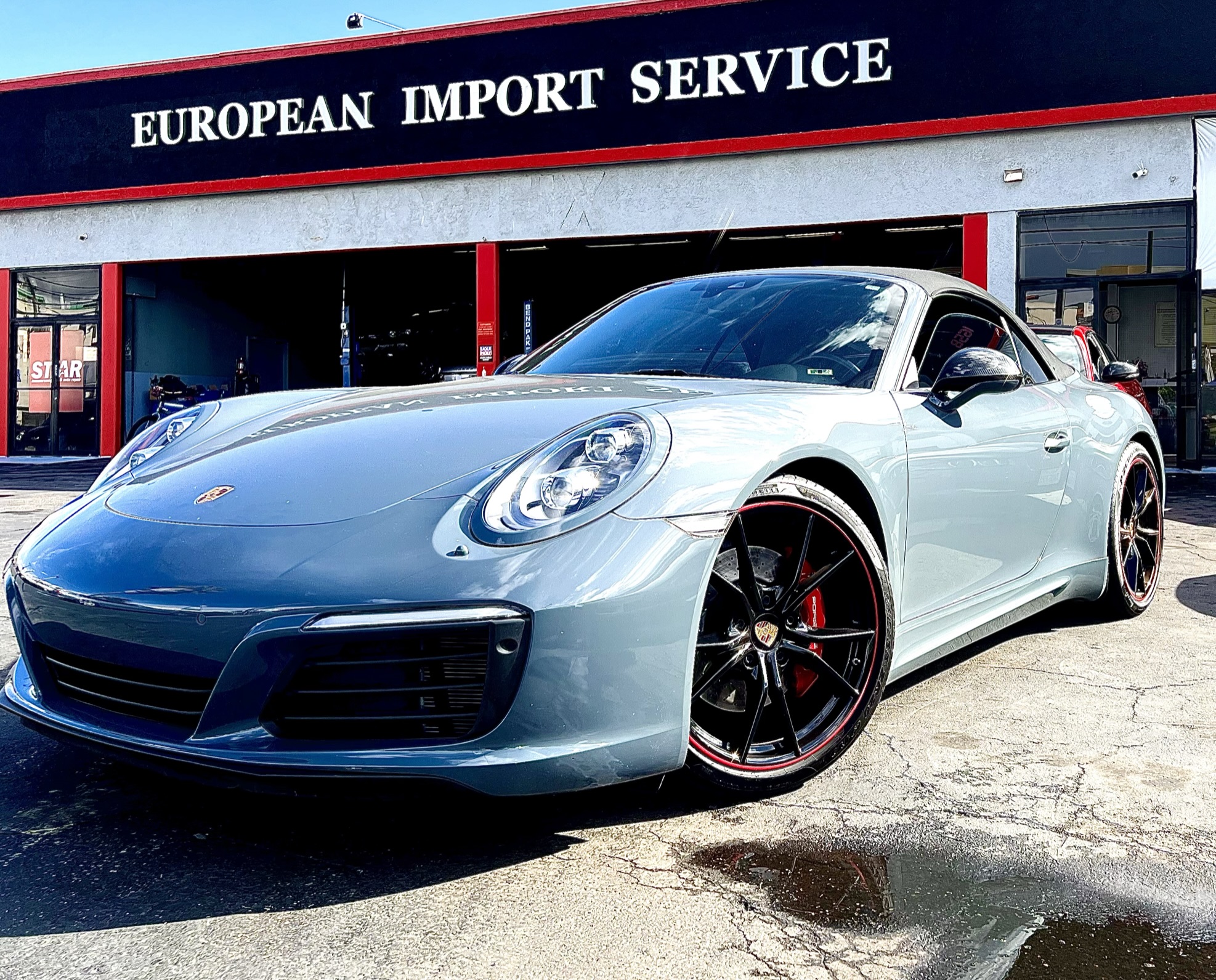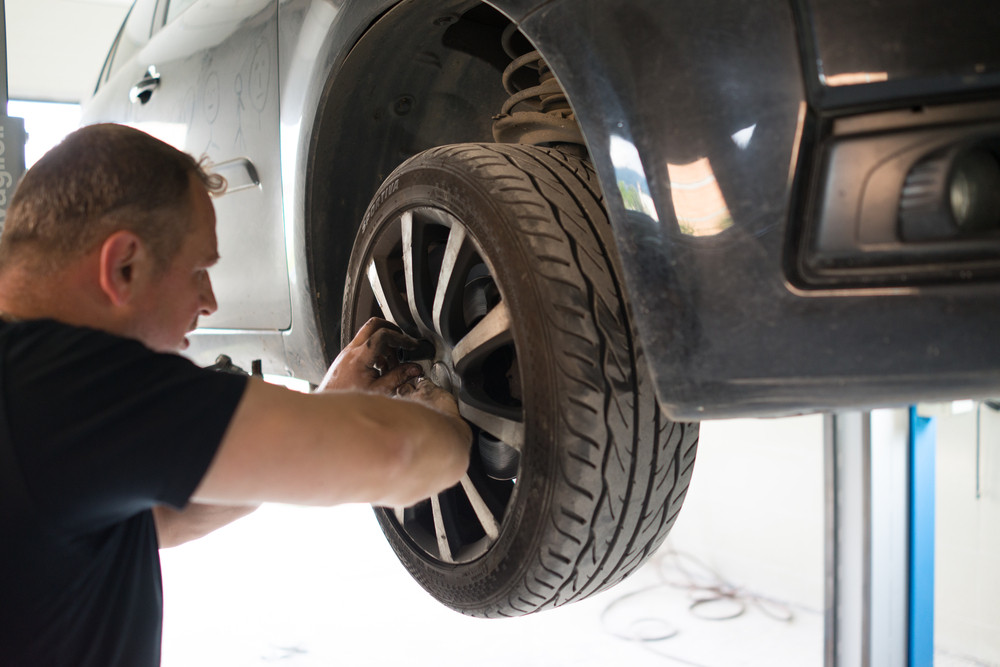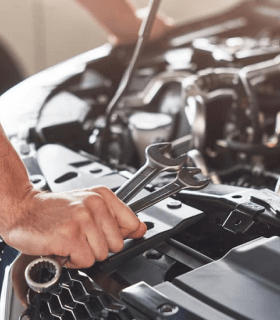Porsche Brake Service Options
in Escondido
Porsche Brake Service Options for Cayenne, Macan, and 911 Owners in Escondido
- Jimmy Bernhard
- Published On: 9-July-2025

Introduction
Driving a Porsche—whether it’s a Cayenne, Macan, or 911—offers a thrilling blend of precision engineering, sport-driven performance, and refined luxury. To keep your Porsche in peak condition, regular service is essential. Among the most critical aspects of maintenance is brake care, which directly affects both performance and safety. In this guide, we’ll explore brake service essentials tailored for Porsche owners in Escondido, including when to service, what to expect, and the options available.
Importance of Brake Service for Porsche Vehicles
Why Brake Maintenance Matters
Porsche brake systems are finely tuned for responsive handling and high-speed stopping power—particularly in performance models like the 911. The Cayenne and Macan, while geared more toward luxury and utility, still utilize advanced braking systems to complement their sporty character.
Your Porsche’s brakes undergo tremendous stress, especially during spirited driving or in mountainous terrain like the Escondido area. Over time, brake pads wear down, rotors heat up and degrade, and fluid can lose its effectiveness. Routine brake maintenance ensures consistent performance, safety, and driving enjoyment.
How to Know When Your Porsche Needs Brake Service
Look for these common signs:
Squeaking, grinding, or screeching when applying the brakes
A pulsating or soft brake pedal
Longer stopping distances
Brake warning light on the dashboard
Visible rotor grooves or thin pads behind the wheels
These symptoms can indicate worn pads, rotor issues, or fluid degradation—each of which can affect stopping power and driving confidence.
What’s Included in a Porsche Brake Service
Porsche brake systems often include cross-drilled or ventilated rotors, high-friction ceramic or composite pads, and multi-piston calipers. A full brake service typically includes:
Brake pad replacement (using OEM or performance-grade parts)
Rotor inspection or resurfacing/replacement
Brake fluid flush and refill (especially important every 2 years)
Inspection of calipers, brake lines, and electronic sensors
Road testing and system calibration
Skipping these steps or delaying service can result in brake fade, uneven wear, or even total brake failure under extreme driving conditions.
Service Options in Escondido for Porsche Owners
As a Porsche owner in Escondido, you have multiple options for brake service:
1. Authorized Porsche Dealership Service
Factory-trained technicians
OEM parts and software diagnostics
Higher price point, but dealership records may help with resale
2. Certified Independent Euro Specialists
Porsche-specific expertise at more competitive rates
Often provide flexible scheduling and quicker turnaround
May use OEM-equivalent parts or offer performance upgrades
3. DIY Service (For Experienced Enthusiasts)
Not recommended unless you have Porsche-specific tools and training
Modern Porsche systems include brake wear sensors, torque specs, and electronic diagnostics
Mistakes could void warranties or damage high-cost components
"A stitch in time saves nine applies to your car as well. Regular maintenance is the best way to avoid costly repairs down the road."
Henry Ford, American automobile pioneer
DIY vs. Professional Porsche Brake Service for Cayenne, Macan, and 911 Owners in Escondido
porsche brake service options in escondido: how often to replace pads, rotors & more
If you’re a hands-on Porsche owner in Escondido, you might consider tackling brake service yourself. While this may save on labor costs, DIY brake work on a Porsche—especially a performance-focused model like the 911—comes with real risks.
Modern Porsche braking systems are complex and engineered with precision. From multi-piston calipers to ventilated or carbon-ceramic rotors, each component has strict torque specs and performance requirements. Incorrectly installing pads or rotors, or mishandling the brake fluid system, could lead to compromised safety, uneven wear, and potentially costly damage.
Unless you’re experienced with high-performance European vehicles and equipped with Porsche-specific tools, DIY brake service is not recommended for most owners.
Benefits of Professional Brake Service
Porsche-trained technicians know the ins and outs of braking systems across models like the Cayenne, Macan, and 911. Choosing professional service ensures your vehicle is handled with:
Precision measurements and torque specs
Genuine or Porsche-approved parts
Brake fluid flushes using the correct DOT-rated fluids
Caliper inspections and brake sensor diagnostics
Warranty-backed repairs and service records
For owners who enjoy spirited mountain drives or track days, a certified shop can also recommend performance upgrades or adjust brake balance for optimal driving dynamics. You simply won’t get that level of assurance with a DIY approach.
Basic Steps for DIY Porsche Brake Service (If Attempted)
If you’re a seasoned DIYer and decide to take on brake maintenance at home, here’s a simplified roadmap:
Gather Tools and OEM Parts
Porsche brake pads and rotors
Caliper compression tools
Jack stands and torque wrench
Brake cleaner and anti-squeal compound
Lift the Vehicle and Remove Components
Safely raise the car, remove wheels, and detach calipers carefully to avoid damaging lines or sensors.
Replace Pads and Rotors
Inspect for wear, install new components, and ensure everything is torqued to spec.
Bleed and Refill Brake Fluid (If Needed)
Use the correct brake fluid (often DOT 4 or higher) and bleed the lines properly to avoid air pockets.
Test and Bed-In Brakes
Follow Porsche’s bedding-in procedure to ensure smooth braking and even wear.
⚠️ Tip: Always refer to your specific model’s service manual for exact procedures, especially for 911 variants or models with ceramic brakes.
Tips for Maintaining Porsche Brake Health
Inspect Often: Look at pad wear and rotor condition every 5,000–7,000 miles.
Replace Brake Fluid Regularly: Porsche recommends every 2 years, or sooner for aggressive driving.
Avoid Hard Braking on Cold Brakes: Especially important for 911 owners or anyone with carbon-ceramic rotors.
Listen for Warning Signs: Noises, vibration, or dashboard alerts mean it’s time for service.
Cost Considerations for Maintenance
Maintenance costs for Porsche brakes depend on the model, parts used, and service provider:
Basic Pad Replacement: Generally more affordable on Macan and Cayenne models.
Rotors: Can be expensive, especially for the 911 or vehicles with optional PCCB (Porsche Carbon Ceramic Brakes).
Full Brake Service: Expect a premium if it includes pads, rotors, sensors, and fluid flush. Performance upgrades can push prices higher.
Still, investing in proper service now can prevent expensive repairs down the line.
Conclusion
For Porsche drivers in Escondido, brake maintenance isn’t just routine—it’s vital to the performance, safety, and prestige of your Cayenne, Macan, or 911. While seasoned DIYers may consider tackling simple brake jobs, professional service provides peace of mind, precision, and protection for your investment. Learn More about us and our services.
FAQs
– How often should I check my Porsche’s brake condition?
At least every 5,000–7,000 miles, or sooner with aggressive driving.
– Can I replace pads without changing rotors?
Yes, but always inspect both. Rotors may need replacing if worn, warped, or below spec.
– Do I need to use OEM Porsche parts?
OEM is highly recommended, but Porsche-approved aftermarket parts can also work well.
– Why is Porsche brake service more expensive?
High-performance materials, complex systems, and labor expertise all contribute to the cost.
– Is it safe to drive if my Porsche’s brake warning light is on?
No. It could signal worn pads, low fluid, or system faults—schedule service immediately.




